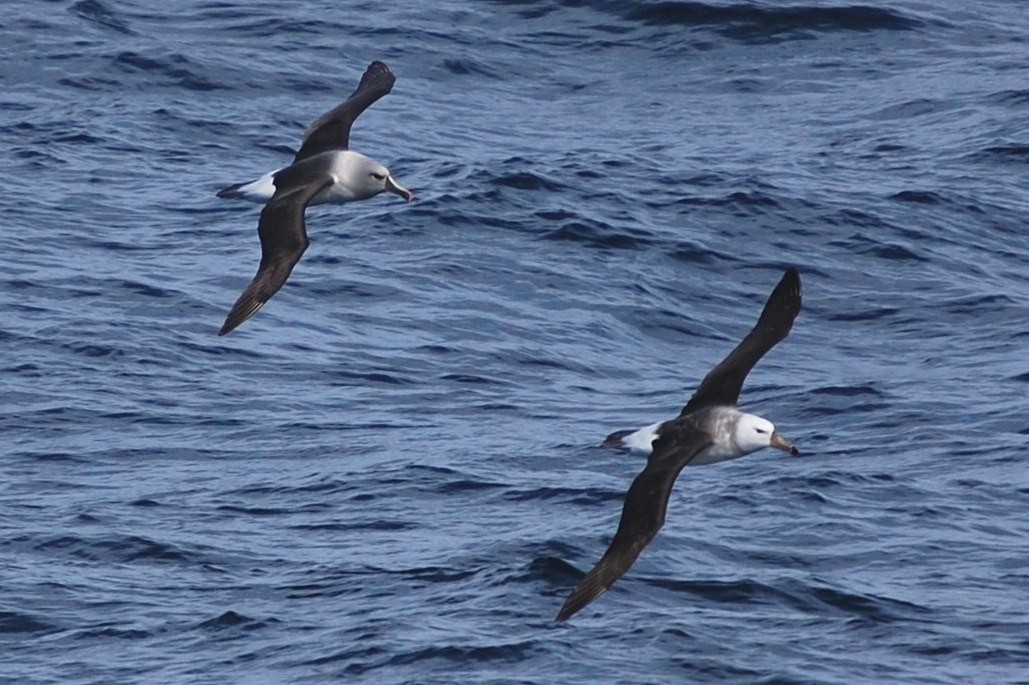Grey-headed Albatross
A species of Mollymawks, Also known as Grey-headed Mollymawk Scientific name : Thalassarche chrysostoma Genus : Mollymawks
Grey-headed Albatross, A species of Mollymawks
Also known as:
Grey-headed Mollymawk
Botanical name: Thalassarche chrysostoma
Genus: Mollymawks
Content
Description General Info
Description
The grey-headed albatross averages 81 cm (32 in) in length and 2.2 m (7.2 ft) in wingspan. Weight can range from 2.8 to 4.4 kg (6.2 to 9.7 lb), with a mean mass of 3.65 kg (8.0 lb). It has a dark ashy-grey head, throat, and upper neck, and its upper wings, mantle, and tail, are almost black. It has a white rump, underparts, and a white crescent behind its eyes. Its bill is black, with bright yellow upper and lower ridges, that shades to pink-orange at the tip. Its underwings are white with a lot of black on the leading edge and less on the trailing edge. Juveniles have a black bill and head and a darker nape. Its eye crescent is indistinct and its underwing is almost completely dark. 
Size
85 cm
Life Expectancy
20-30 years
Nest Placement
Cliff
Feeding Habits
Grey-headed Albatross primarily feed on squid, fish, and crustaceans. They exhibit opportunistic feeding behaviors, including scavenging on carrion and consuming cephalopods and lampreys. Unique adaptations include surface seizing and pursuit plunging, exploiting a diverse marine diet.
Habitat
Grey-headed Albatross primarily inhabit marine and pelagic environments, favoring colder surface waters distinctively more than most other albatross species. Their breeding grounds are typically located on remote oceanic islands where they occupy steep slopes or cliffs, often adorned with tussock grass. These birds rarely approach land, except during their breeding season at colonies.
Dite type
Piscivorous
General Info
Feeding Habits
Bird food type
Species Status
The IUCN classifies this bird as endangered due to rapidly declining numbers in South Georgia which holds around half the world's population. It has an occurrence range of 79,000,000 km (31,000,000 sq mi) and a breeding range of 1,800 km (690 sq mi), with a population, estimated in 2004, of 250,000. Estimates place 48,000 pairs at South Georgia Island, 6,200 on Marion Island, 3,000 pairs on Prince Edward Islands, 7,800 pairs on Campbell Island, 16,408 pairs in Chile, 84 pairs on Macquarie Island, 5,940 on Crozet Island, and 7,905 on Kerguelen Islands Populations have been shrinking based on different studies. Bird Island numbers have been reduced 20% to 30% in the last 30 years. Marion Island registered 1.75% reduction per year until 1992 and now appears to be stable. Campbell Island has seen reduction of 79% to 87% since the 1940s. Overall, the trends looks like a 30-40% reduction over 90 years (3 generations). Illegal or unregulated fishing in the Indian Ocean for the Patagonian toothfish, Dissostichus eleginoides resulted in 10–20,000 dead albatrosses, mainly this species, in 1997 and 1998. Longline fishing is responsible for other deaths. To assist this species, studies are being undertaken at most of the islands. Also, Prince Edward Islands is a special nature preserve, and Campbell Island and Macquarie Island are World Heritage Sites. 
Scientific Classification
Phylum
Chordates Class
Birds Order
Albatrosses and Petrels Family
Albatrosses Genus
Mollymawks Species
Grey-headed Albatross 